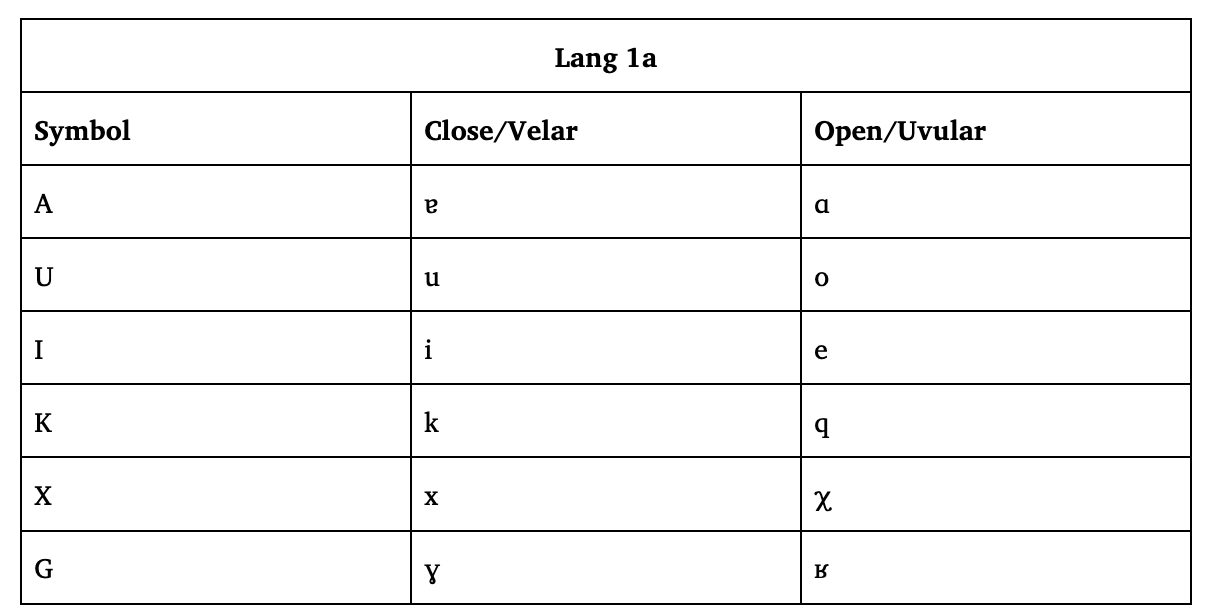Creating a Conlang Family Part 9.5: Underspecified Phonemes, and Verb Agreement in Descendant Languages
Underspecification is not something that I understand fully. But, when talking about harmony, an underspecified phooneme is a symbol used to refer to all potential versions of a phoneme in words with different harmonies. For instance, in language 1a, the underspecified phoneme /I/ corresponds to the phonemes [i] and [e]. These are helpful when writing out morphology – because instead of having to write each form of the affix, you can write it using the archiphoneme. To do that, however, we’ll need to set what these underspecified phonemes are:
(When one of the underspecified vowel phonemes is followed by a long mark, ː, that means that it’s a long version of whichever vowel the underspecified phoneme becomes.)
Same deal applies here. Note the underspecified phonemes Yː and Oː, which were formed when diphthongs with an off-glide [u̯] coalesced. We won’t see these here, but we’ll be dealing with them later.
With that out of the way, let’s get to the actual affixes:
*(Note that the suffix form of the second person plural will always be close/velar, because the [ç] blocks backing harmony.)
And with that, the verb agreement affixes are pretty much done! Next time, I’ll show the romanization system of these languages, and discuss some of the choices I made.



